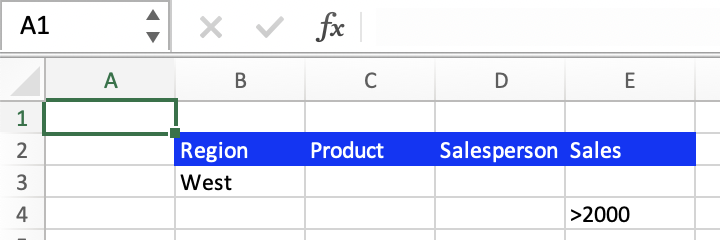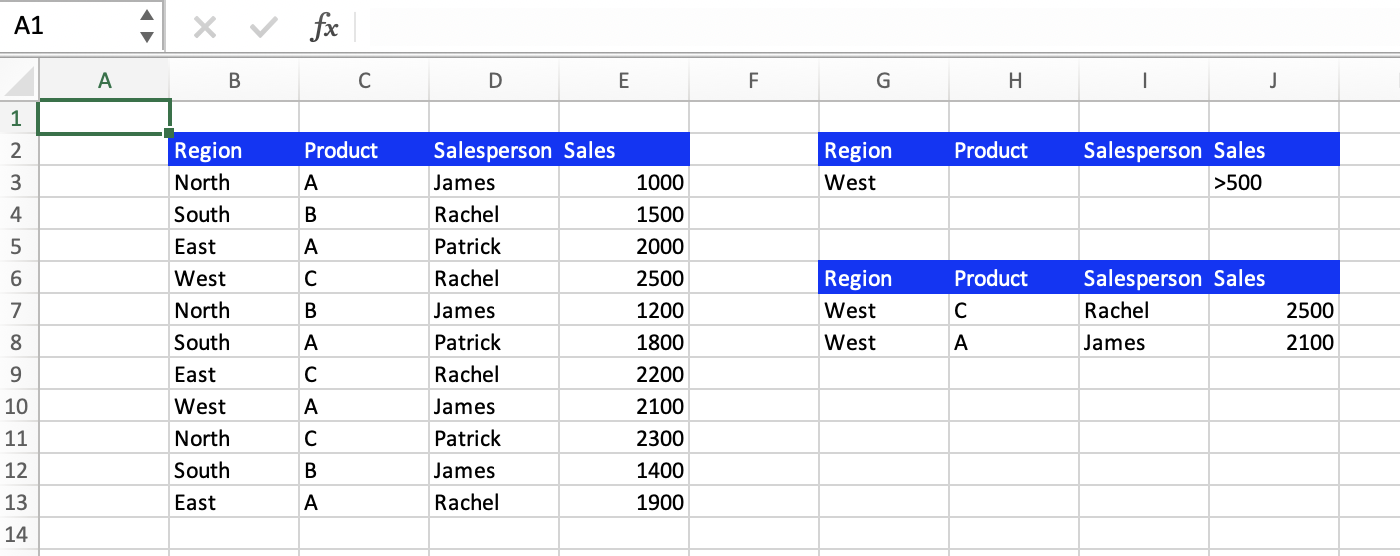Advanced Filtering in Excel: A Comprehensive Guide
In this guide, we will dive into the world of advanced filtering in Excel, discussing its importance, how it works, and giving practical examples for implementation.
What is advanced filtering in Excel?
Advanced filtering is a feature in Excel that allows users to filter data based on complex and multiple criteria, providing a level of flexibility and specificity not available in basic filtering. It provides an alternative to standard filtering, which primarily works on a single column or a unique criterion. Advanced filtering is useful when you need to isolate data based on more complex conditions or when the criteria involve several fields or conditions.
The importance of advanced filtering in Excel
In data analysis, filtering is an essential tool for handling and making sense of large datasets. Below are a few examples of what advanced filtering can provide you:
- Detailed Data Examination: You can delve deep into your data, examining it based on multiple or complex criteria.
- Time-Saving: Advanced filtering can save you time by narrowing down large datasets to a manageable size quickly.
- Error minimization: By setting up specific criteria, you minimize the chance of erros and ensure a higher level of accuracy.
- Enhanced decision making: Advanced filtering can help you identify trends and patterns that aid in informed decisions.
How to apply advanced filtering in Excel
Before applying advanced filters your data should be organized into columns with each column having a unique header. Below are the steps to applying advanced filters to these columns:
- Prepare your criteria range: The criteria range includes the headers and the conditions based on which you want to filter the data. It is placed separately from the data range.
- Select “Advanced” from the “Data” tab: Navigate to the Data tab and click on Advanced in the Sort & Filter group
- Define the list range and the criteria range: In the advanced filter dialog box, select “Filter the list, in-place” or “Copy to another location”, depending on your requirements. Then specify the List Range (your data range) and Criteria Range (the range that contains your criteria).
- Run the filter: Click “OK” to run the advanced filter.
Criteria for advanced filtering in Excel
When setting up criteria for advanced filtering, there are several options and logical operators you can use. Below are a few examples:
- Equals: To filter cells that equal a certain value, simply enter the value.
- Does not equal: To filter cells that don’t equal a certain value, type <> followed by the value.
- Greater than, Less than: Use > or < followed by the number
- Greater than or equal to, Less than or equal to: Use >= or <= followed by the number.
- Begins with, Ends with: Use an asterisk (*) followed by a text string.
- Contains: use an asterisk (*) on either side of the text string.
You can also use AND and OR criteria for your advanced filter. AND criteria require all conditions to be met, while OR criteria requires any one of the conditions to be met. To apply the AND criteria simply have the conditions in the same row. To apply the OR criteria have the conditions in separate rows. An example can be see below.

In the image above is the use of the OR criteria. These conditions can then be read as, filter the data set by the sales made in the West OR the sales larger than $2000. And so the results will display the sales which meet either conditions. If both conditions were in row 3 the conditions would be read as sales made in the West that were larger than $2000, thus meeting both conditions with an AND criteria.
Common problems with advanced filtering in Excel
Sometimes, you might encounter issues while applying advanced filters in Excel. Here are some common problems and how to possibly resolve them:
- Criteria not working: Make sure the criteria headers exactly match the headers in your data range.
- No data is being filtered: Check if your data range and criteria range are defined correctly.
- Duplicate data after filter: Ensure “Unique record only” is checked if you want to remove duplicates.
Practical examples of using advanced filtering in Excel
Suppose you have a dataset of sales records that include “Region”, “Salesperson”, “Item”, and “Sales” and you want to filter all records where the region is “West” and “Sales” are above 500. Below is an image of the data set, the criteria, and the Advanced Filter dialogue box for this example.

Note that in this example, we want to copy the result of the advanced filter to another range of cells. Below is an image of this resulting filter.

As seen in the image above, the result then displays the filtered data with the data points that are sales above $500 in the West region.
Advanced filtering in Excel is a powerful tool for data analysis and manipulation. It allows you to dive deep into your data using complex and multiple criteria to extract meaningful insights. With practice and understanding, you can use advanced filtering to enhance your data analysis and decision making capabilities significantly.
Go to the page LiveFlow‘s How to Guides to find more information about Excel and Google Sheets formulas and tips that were not covered here.

